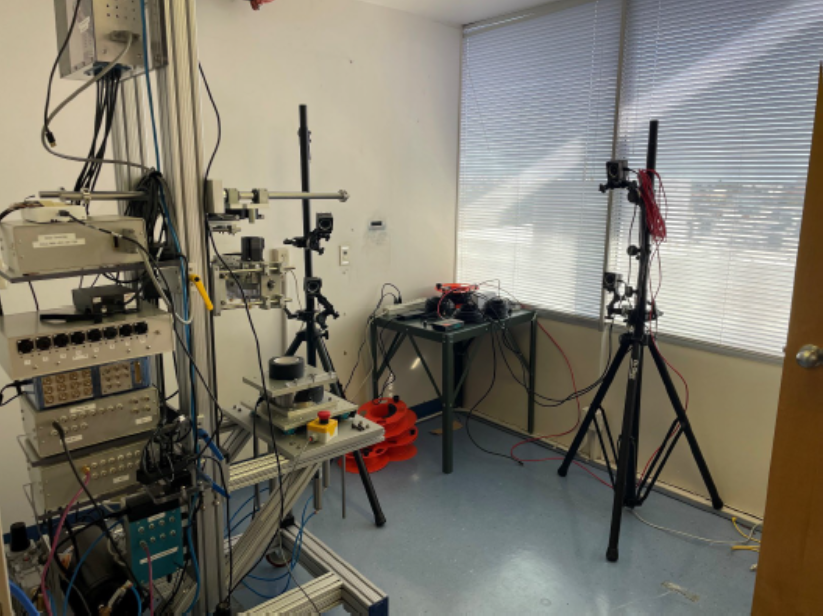Advantages:
- Spine simulator helps assess the biomechanical effects of various interventions to the spine that include surgical implants, excision, or fusion, previously limited by range of motion
- Interventions for spinal injuries can be tested through highly customizable repeat simulations before and after various injuries / interventions
- Improved range of motion capabilities enable the incorporation of customized testing of spinal segments from the cervical to sacral spine.
Summary:
Lower back pain is a leading cause of disability and affects over 80% of adults. There is a need to study the biomechanics of the full spine as biomechanics can globally affect the spine and determine improved interventions that will decrease both the disability and pain load of the worldwide population to this musculoskeletal disease burden.
Biomechanical simulation of the spinal segments allows for testing implants for durability, identify weaknesses in current practice, and also helps improve the biomechanics of future interventions for improvement in vivo patient outcomes. This new spine simulator allows the complex motion of the spinal segments and their pressure distributions to the intervertebral discs to be studied, including artificial intervertebral discs, various spinal reconstruction techniques, effect of disc herniation and disc damage, and potential methods for prevention of spinal pain especially with development of finite element models.
This spinal simulator enables the measurement of aspects of spinal cord articulation in the pelvis and full torso, facilitating measurements from the cervical to the sacral spine. It can capture data from up to two million repeat iterations of a given movement, which importantly provides critical information both about the baseline pre-injury control condition as well as the post-injury condition. The new insights provided by this spinal simulator will inform new therapeutic strategies to treat spinal injury, disability, and degeneration.

Figure 11 shows a schematic of an arrangement of a spine simulator with a 3D motion system including tripod mounted cameras situated near the spine simulator.
Desired Partnerships:
- License
- Sponsored Research